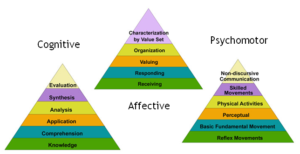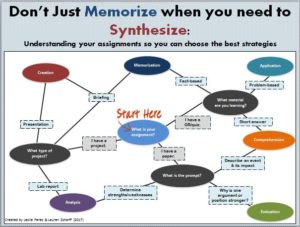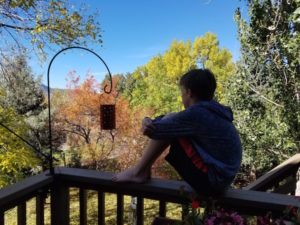by Hillary Steiner, Ph.D., Kennesaw State University
The students in my first-year seminar were engaged in a small group activity, which had spread outside of the classroom into the hallways. It was my first semester teaching this seminar, and we were approaching midterm. “Adam,” a good student who normally acted as a leader during group activities, sat alone, trying to stifle tears. He seemed grateful that I cared to ask what was wrong, but doubtful that I could help. His story was one I’d heard before. After years of straight As in science classes, he was encountering his first failures in an important chemistry course that was a gateway course to his major. His plan was to drop the course and rethink the career plans he’d first made as a child. Could I explain why “studying like crazy” wasn’t working? His chemistry professor couldn’t. While I had introduced good study strategies to the students a few weeks prior, this touching conversation caused me to rethink the way I approached the topic. Drawing on my background in educational psychology, I came to two conclusions: 1) I needed to make sure students understood the why behind study strategies so they’d be better prepared to implement them, and 2) I needed to reach out to other faculty to encourage the application of these strategies in the context of content-area courses. Since that time, I’ve written about these activities for a faculty audience (Steiner, 2014; 2016; Steiner, Dean, Foote, & Goldfine, 2013; 2016) and changed the way I approached metacognition.
Lately there seems to be a buzz about metacognition at my institution. Dr. Saundra McGuire, Director Emerita of the Center for Academic Success at Louisiana State University and author of a popular book on the topic (McGuire, 2015), visited our campus recently to speak about the importance of metacognition. Unlike me, who first learned of metacognition in my graduate training, McGuire discovered metacognition from outside educational psychology. As a chemistry professor, she saw the powerful ways her students’ learning was transformed when they used metacognitive strategies. Inspired by her campus visit, many faculty began requesting more information about how they could use metacognition in their own classes. At our teaching and learning center where I currently serve as a faculty fellow, my colleagues and I responded by offering more workshops and consultations on how to put the concept into practice. In these interactions, most faculty easily grasped metacognition, understood its importance, and were able to generate some strategies for their courses. However, what they needed was a quick and easy way to promote the idea to students—a concise primer for how (and why!) to become a metacognitive college student. I realized that such a document could also serve as a jumping-off point for discussion with my own students.
The handout was developed with this in mind. Keeping in mind students’ motivations for using such a document, I kept the language brief, encouraging, and jargon-free. I did not include scholarly references, but I did include a short list of resources students could access for further reading. My intent was to provide students enough of an explanation and rationale for metacognition that they’d have sufficient motivation to put the suggested strategies to use in an authentic context. Many faculty with whom I’ve worked feel they lack adequate time to introduce metacognition in their content-area courses. However, while first-year seminars and learning-to-learn classes offer a great opportunity to talk at length about metacognition, students especially benefit when content-area faculty encourage it in their individual disciplines. I am hopeful that this handout can serve as a resource for time-strapped faculty to distribute to their students who, like Adam, are searching for that life hack that will help them succeed in college.
References
McGuire, S. Y. (2015). Teach students how to learn: Strategies you can incorporate into any course to improve student metacognition, study skills, and motivation. Sterling, VA: Stylus.
Steiner, H. H. (2014). Teaching principles from cognitive psychology in the first-year seminar. E-Source for College Transitions, 11, 14-16.
Steiner, H. H. (2016). The strategy project: Promoting self-regulated learning through an authentic assignment. International Journal of Teaching and Learning in Higher Education, 28, 271-282.
Steiner, H.H., Dean, M. L., Foote, S. M., & Goldfine, R. A. (2013). Applying TLC (a targeted learning community) to transform teaching and learning in science. Learning Communities Research and Practice, 1(3), Article 5.
Steiner, H. H., Dean, M. L., Foote, S. M, & Goldfine, R.A. (2016). The targeted learning community: A comprehensive approach to promoting the success of first-year students in general chemistry. In L. C. Schmidt & J. Graziano (Eds.), Building synergy for high-impact educational initiatives: First-year seminars and learning communities. Columbia, SC: National Resource Center.


